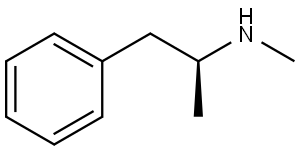
Methamphetamin
Bezeichnung:Methamphetamin
CAS-Nr537-46-2
Englisch Name:D-METHAMPHETAMINE
CBNumberCB5101667
SummenformelC10H15N
Molgewicht149.23
MOL-Datei537-46-2.mol
Synonyma
Methamphetamin
Methamphetamin physikalisch-chemischer Eigenschaften
| Schmelzpunkt | 143°C (estimate) |
| Siedepunkt | 230.33°C (estimate) |
| Dichte | 0.9285 (estimate) |
| Brechungsindex | 1.5105 (estimate) |
| Flammpunkt | 9℃ |
| storage temp. | 2-8°C |
| pka | 10.38±0.10(Predicted) |
| Kennzeichnung gefährlicher | F,T |
| R-Sätze: | 11-23/24/25-39/23/24/25 |
| S-Sätze: | 16-36/37-45 |
| RIDADR | 1851 |
| WGK Germany | 1 |
| HazardClass | 6.1(b) |
| PackingGroup | III |
| Giftige Stoffe Daten | 537-46-2(Hazardous Substances Data) |
| Toxizität | A widely abused drug; a sympathomimetic and central stimulant that has been used clinically as an anorectic agent. The use of methamphetamine and related drugs in treating obesity is, however, now generally discredited. It may cause elevation of blood pressure, palpitation, and tachycardia, as well as various CNS effects, including psychotic effects at higher doses. Chronic use of methamphetamine and related compounds, especially at high doses as often occurs with drug abuse, can cause a condition often indistinguishable from schizophrenia. Abrupt withdrawal may cause fatigue, depression, and sleep changes. Methamphetamine is an indirect-acting adrenergic and dopamine agonist that acts principally to release endogenous catecholamines, thereby increasing their synaptic availability. Many of its actions can be blocked by adrenergic and dopamine antagonists. The i.p. LD50 in mice is 70 mg/kg. |



